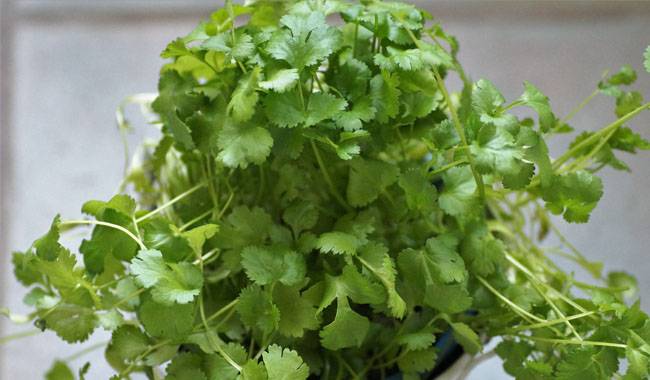
Coriander is one of the most popular spices in the world. It is often referred to as Coriandrum or Cilantro. Coriander gets its name from the Greek word “koris” because of its special aroma.
Interestingly, coriander leaves people in different react. Some people can’t get enough of it and love to make any salad and sandwich with it. They like boron bread because it has the special flavor of coriander seeds.
Others mention the smell, causing associations with forest bugs, hate cilantro, and flatly refuse to approach even the bundles of cilantro in the market, let alone plant it in the garden. And in vain, because cilantro is a very useful plant.
BIOLOGICAL PROPERTIES OF CORIANDER
Coriander (Coriandrum sativum L.) – annual herb resistant to cold, ranging in height from 16-40inch (40-100 cm).
Stems glabrous, erect with free internodes, branched at the top. Radical leaves are fusiform, broad, with long petioles. The margins of the leaf blades are toothed. The upper leaves are sessile and finely dissected. The leaf blade is dense and dark green.
The flowers are small and delicately white-pink, clustered into compound umbels. The wrapper of the umbrella is always a single sheet. flowering starts in late June and lasts for about a month. The flowers are very sensitive to high temperatures. Fruit will not form on these plants if flowering begins at 93°F (34°C) or higher.
The fruit is a globular lamella (up to 5 mm in diameter) whose surface is covered with fine curved lines. coriander seeds are lightly brown and golden in color. The fruit ripens in August. The germination period is about 5 years, then the seeds discolor and lose their fragrance.
The root system is not strongly developed. Taproots are thin, small, and fusiform.
Cultivation of Coriander
Coriander is not demanding, but it does not bear fruit on thick, dry soil, grows slowly, its leaves turn yellow, become smaller and harder, and lose flavor. It grows well on fertile, loose, well-drained neutral soil.
Spring sowing of Coriander
If Coriander has not been sown under winter, seeds can already be started in April, although germination is slow due to low nighttime temperatures. If nighttime temperatures exceed 43°F (6°C), seeds will germinate within 10 days. The increase in soil moisture greatly facilitates rapid seed germination.
Coriander should be planted in spring or with a little shade where it is sown in winter. Indirect sunlight, Coriander leaves become finer, harder, and turn yellow quickly.
The essential oil contained in the fruit can greatly inhibit seed germination. Therefore, soak the seeds of Coriander in warm milk for about 4 hours before sowing (in the same way as the seeds of anise, cumin, and parsley). Essential oils are highly soluble in fat and after about 4 hours the milk will acquire a faint Coriander aroma. Wash the seeds in warm water and now they are ready to be sown.
The distance between the seed rows is 8inch (20 cm) and the distance between the plants in the rows is 4inch (10 cm). The sowing depth is about 0.4inch (1cm).
Coriander is quite aromatic and has an effect on the neighbors in the bed. Fennel and dill, for example, have a reduced flavor and aroma quality. However, Coriander cannot compete with mint, as its flavor becomes weaker or disappears completely.
Since Coriander has flexible stems, by the time the fruit develops, it should be tied to a stand.
Coriander should be watered more, but less after flowering and stop watering altogether during seed maturity.
SOW CORIANDER FOR MEDICINAL PURPOSES IN AUGUST
Just for leaf picking, Coriander can also be sown in August. This plant is a “long day” and it is “more profitable” for the greenery to sow it when the light days become shorter. The full developmental cycle of the plant necessarily includes the flowering period, which requires a lot of light.
When sowing in “autumn”, choose a warm, sunny place, which cannot be shaded as in spring.” The sprouts of “Autumn” Coriander appear very quickly and have a different appearance than spring-sown Coriander.
They give all their energy to the foliage and no flower stems appear. Thick rosettes of fleshy, dark green leaves with long petioles form quickly. The aromatic herbs can be harvested throughout the fall until the first severe frost.
CORIANDER IS USED IN TRADITIONAL MEDICINE
The whole plant contains a large number of vitamins, minerals, essential oils (in fruits – 1.6-2.4%), resins. But most importantly, their useful properties are enhanced by the presence of special acids: myristic, palmitic, stearic.
Coriander fruits are used for medicinal purposes, as are the leaves and flowers, which are collected from flowering.
Coriander-based preparations strengthen the cardiovascular system. The plant is used for the treatment of arrhythmia, atherosclerosis, depression, food poisoning, biology.
For the prevention of atherosclerosis, arrhythmia, hypertension, green Coriander (30 g) and seeds (5 g) pour a liter of boiling water. Insist for one hour, strain, and add two tablespoons of rose hips and one tablespoon of black arborvitae juice. Take 100 ml three times a day, before meals (about 1 hour). For a period of three weeks (twice a year).
For the prevention of heart attacks and strokes chop Coriander (one bunch), add crushed apricots (50 g), maximally ground walnuts (20 g), and two tablespoons of honey. Take 2 tablespoons three times a day, half an hour before meals. For a period of two weeks (four times a year).
Coriander has antiseptic, anti-inflammatory, and wound healing properties. Powder made from dried Coriander leaves is sprinkled on wounds and ulcers and heals slowly.
For the prevention and treatment of stomatitis and periodontal disease, gingivitis juice made from fresh Coriander diluted in a 1:1 ratio with water is gargled twice a day. One-week course.
Throat with angina and tonsillitis gargle with Coriander herb warmed and soaked. One teaspoon of freshly ground Coriander poured over a cup of boiling water. Insist on wrapping it in a towel or strain it after 20 minutes in a thermos.
Coriander essential oil is used in medicine, the food industry, and the beauty industry. Coriander essential oil has been an ingredient in toilet water since as early as the 17th century and was produced in Paris. It is usually added to tobacco blends.
Coriander oil is considered to be one of the strongest antiseptics and the most rapidly acting antidepressant oils. It helps relieve irritability, nervousness, feelings of fear and anxiety, and headaches.
Coriander oil helps to relieve aches and pains, gently warms and soothes rheumatism and neuralgia, normalizes blood sugar levels, and restores the strength of fatigue and chronic fatigue.
USING CORIANDER IN COOKING
In ancient Rome, the juice of fresh Coriander leaves was mixed with vinegar and applied to meat to make it last longer. Modern scientific studies have confirmed these claims. This plant has been found to contain components that exhibit antiseptic and fungicidal activity.
Coriander is most commonly used in Oriental cooking.
In Thai cuisine, Coriander is used in most dishes, not only with seeds and fresh leaves but also with the addition of flowers, roots, and stems. In Japan, Coriander is very popular in chocolate, candy, marmalade, cookies, and Coriander ice cream.
Coriander can also be used to make savory chips and mint lemonade, not to mention countless ready-made sauces and pastes.
In India, Coriander seeds are used in almost all salads, soups, dishes, dairy products, jams, sauces, and, of course, as the main ingredient in the popular spice, curry.
Coriander seeds are used to make the famous gin, yellow chartreuse, and Benedictine liqueur.
Both the leaves (harvested before flowering) and the seeds (not only the mature seeds but also the very aromatic green “balls”) of Coriander are used in cooking. The ripe seeds are used in many spices, while the green ones are used in salads, added to cheeses and omelets, and used in grilled fish.
Interestingly, the aroma of Coriander seeds depends on their maturity. For example, the clean and fresh aroma has a floral note. Some even have a spicy aroma with a hint of lily of the valley.
When preparing salads, sauces, and side dishes, Coriander should be considered to combine very well with ginger, black pepper, citrus fruits, and especially with lime, basil, and lemongrass (lemongrass).




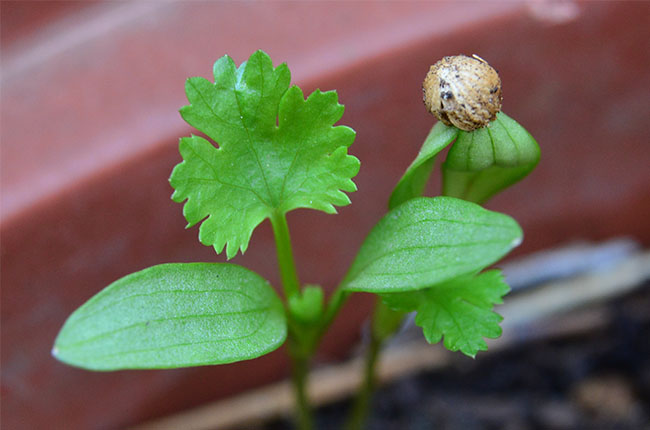
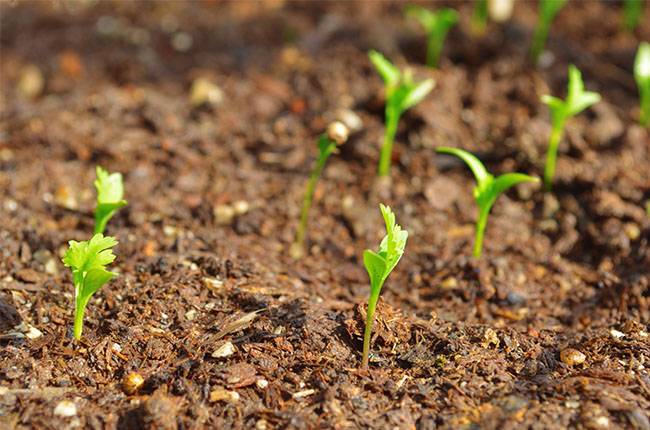
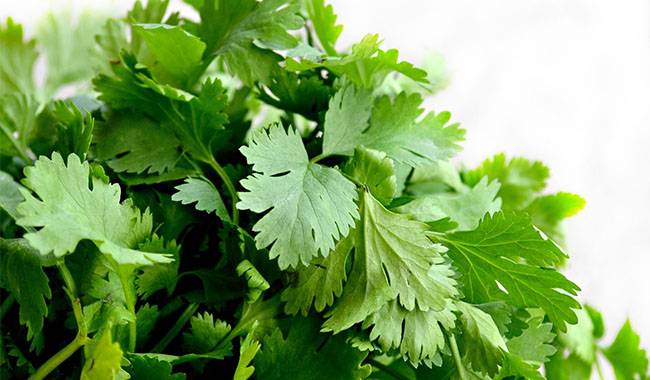
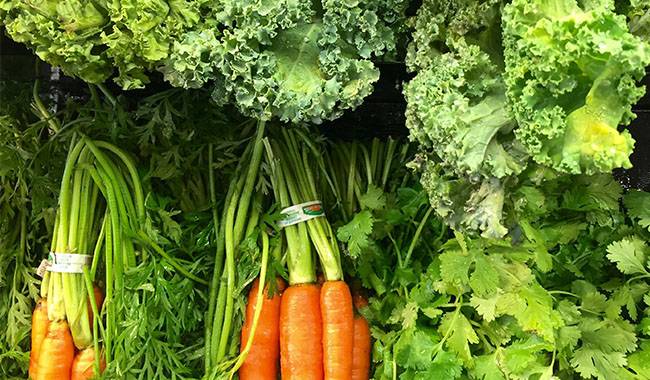
What an exquisite article! Your post is very helpful right now. Thank you for sharing this informative one. Contact us if you want to order spices online at wholesale price…